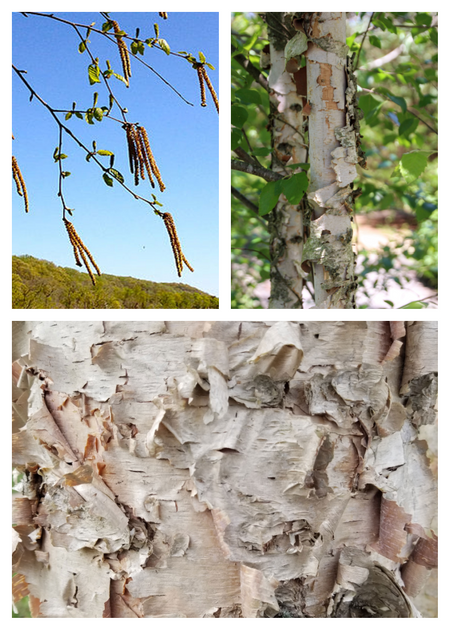River Birch

Scientific Name: Betula nigra
Common Name: River birch, black birch, water birch
Plant Family: Betulaceae (Birch family)
Etymology: Betula comes from the Gaulish “betu-” meaning bitumen, or asphalt. This refers to how the Gauls used extracted tar from birches.
Parts Used: bark, wood, gum, sap
Season: spring, summer
Indigenous Uses
Medicinal uses of birch included a bark decoction for milky urine and to help with stomach pain; the chewed leaves or tea served as an antidiarrheal, cold remedy, urinary aid, and gastrointestinal aid. As a craft product, the wood lends itself to being carved into bowls and other tools. The peeled bark has been used for constructing baskets, buckets, storage bins, and canoes. Antifungal properties of the bark help to prevent pests from infiltrating storage bins.
Edible Parts
Harvest Betula nigra sap in early spring before the leaves unfurl, about a month after maple trees. The boiled-down sap is thicker than maple syrup and tastes more like molasses, though it’s not as sweet as the sap of sweet birch (B. lenta). The sap can be used as a sweetener, can be fermented, can be used in drinks, or can be concentrated into a syrup. The inner bark, leaves, and twigs can be made into a warming tea. In addition, the bark is a source of wild yeast that can be used to make a yeast starter solution. Collect bark in the spring when the sap is still running to prevent the inner cambium from coming off with the bark, which damages the tree. Make a vertical cut, only as deep as the cambium, and make shallow horizontal cuts at the top and bottom to peel away from the trunk.

This project was made possible by a grant from Maryland Humanities, with funding received from the Maryland Historical Trust in the Maryland Department of Planning. Maryland Humanities’ Grants Program is also supported by the National Endowment for the Humanities and private funders. Any views, findings, conclusions, or recommendations expressed on this website do not necessarily represent those of Maryland Humanities, Maryland Historical Trust, Maryland Department of Planning, or National Endowment for the Humanities.

